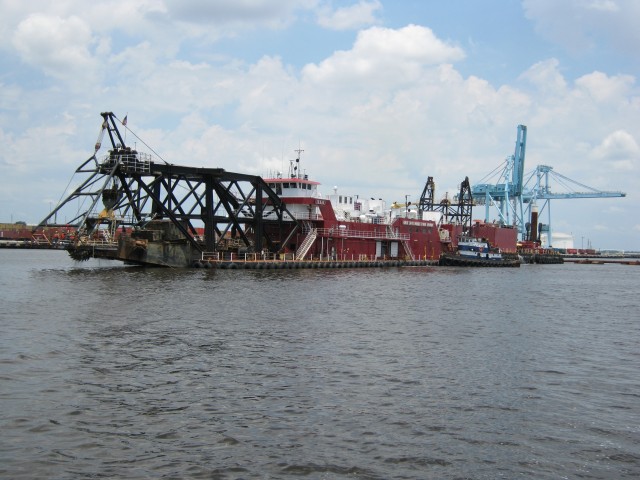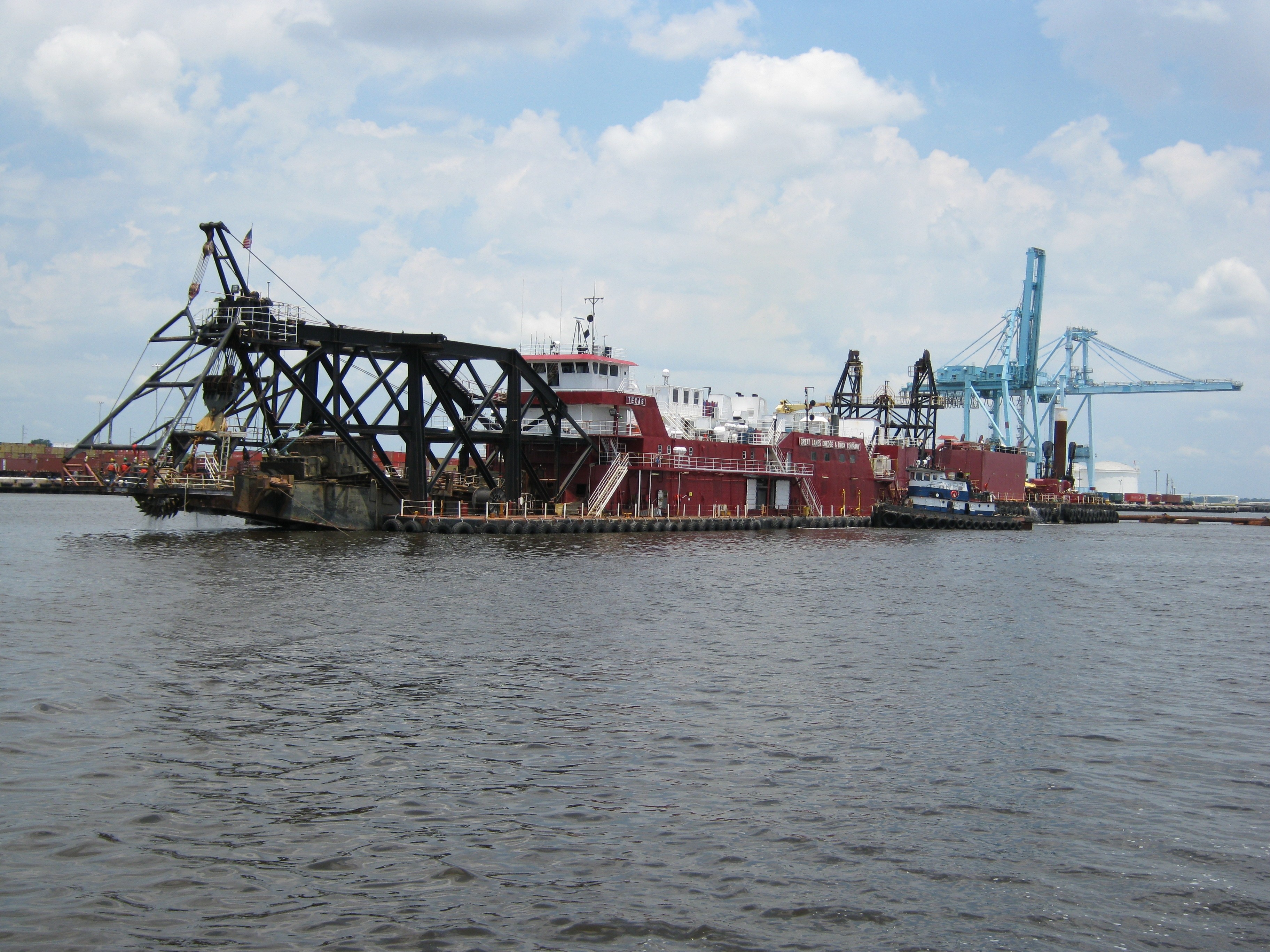JACKSONVILLE, Fla. - The U.S. Army Corps of Engineers Jacksonville District wrapped up a 10-year process and completed the Jacksonville Harbor deepening project July 3, two months ahead of schedule. The third phase of the $53.3 million project, which began with study authorization in 1999, was made possible by $34.4 million provided under the American Recovery and Reinvestment Act (ARRA).
Contractor Great Lakes Dredge and Dock LLC of Oak Brook, Ill., deepened a 5.3-mile stretch of the St. Johns River, Jacksonville's main shipping channel, from 38 to 40 feet, removing 2.1 million cubic yards of material and placing it in an upland disposal facility.
"ARRA allowed us to complete this project, paving the way for JAXPORT to remain competitive by accommodating the water depth requirements of fully-loaded cargo vessels and meet the needs of new, larger vessels," said Steven Ross, project manager. "Without ARRA, there was a good chance that this project wouldn't have been accomplished."
Ross added that almost half of the benefits realized from the project came from expanding the Chaseville Widener from 100 to 200 feet, giving unrestricted access and increasing the safety of vessels as they navigate the channel.
According to its website, JAXPORT supports about 65,000 jobs across the region and has an economic impact of $19 billion annually. It offers multiple cargo terminals for the intermodal transport of containers, automobiles, bulk, breakbulk and refrigerated cargoes, as well as cruise passenger service. Port authorities consider maintaining a deep harbor essential to keeping Jacksonville's port viable.
Two additional Jacksonville Harbor projects partially funded by ARRA will also contribute to long-term plans for JAXPORT. A study is being conducted to determine the source of erosion along the Mile Point shoreline, part of the north bank of the St. Johns River about four miles from the coast. The study will identify solutions for reducing crosscurrents that currently restrict deep draft traffic.
Further engineering and environmental surveys are under way in support of a feasibility study to evaluate the potential for additional deepening and widening of the harbor.
JAXPORT officials say that with favorable study results, the projects could coincide with the expansion of the Panama Canal over the next several years, positioning JAXPORT as the first U.S. East Coast port of call for large vessels in the East-West trade lane.


Social Sharing